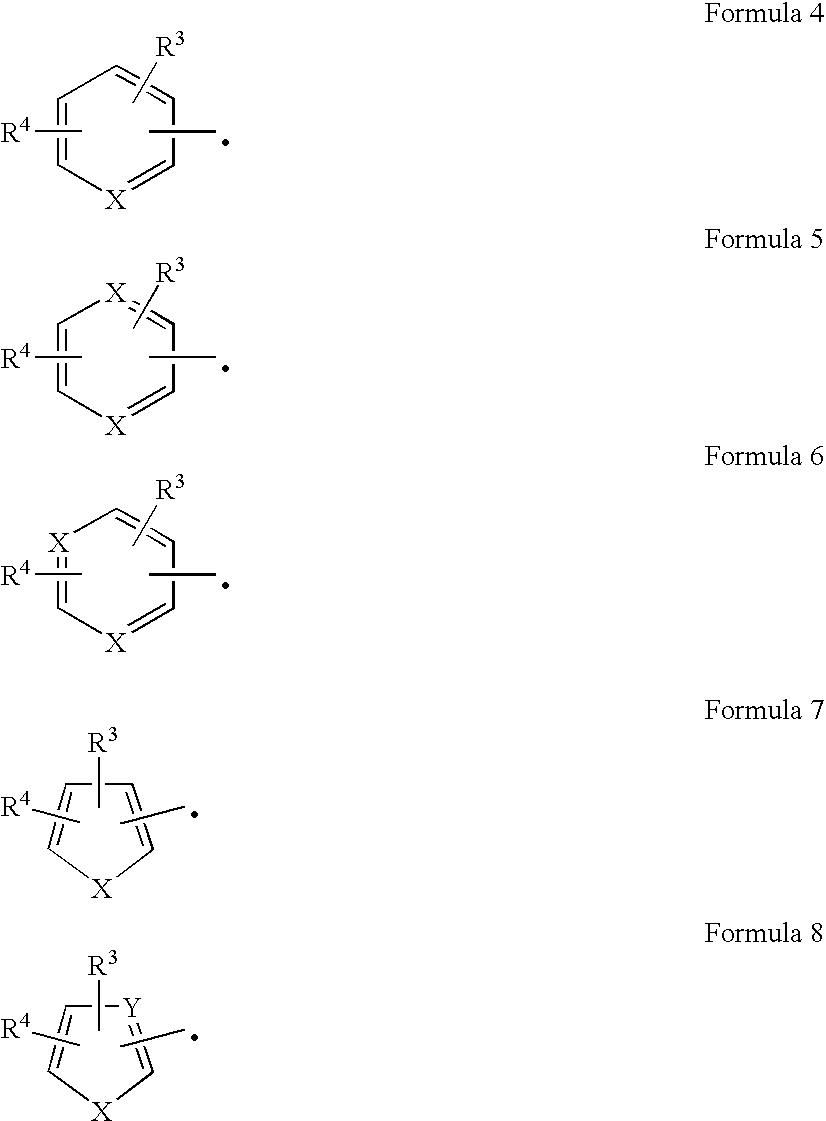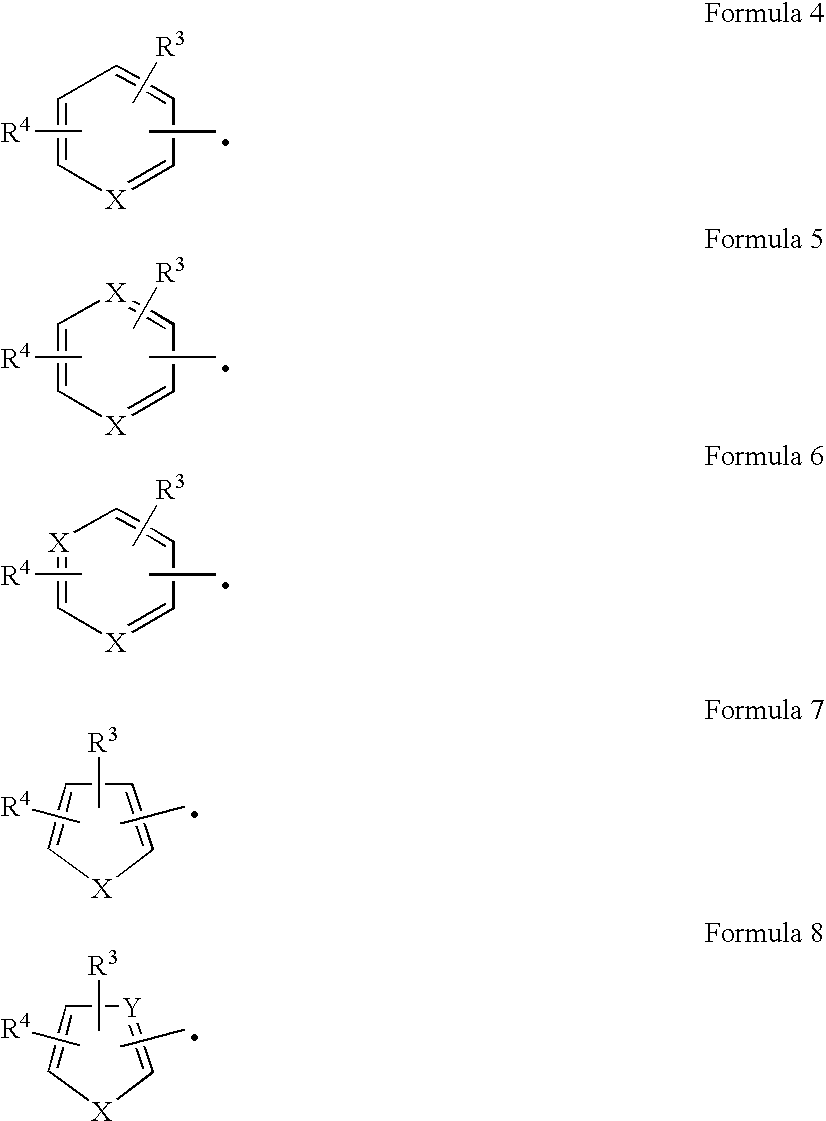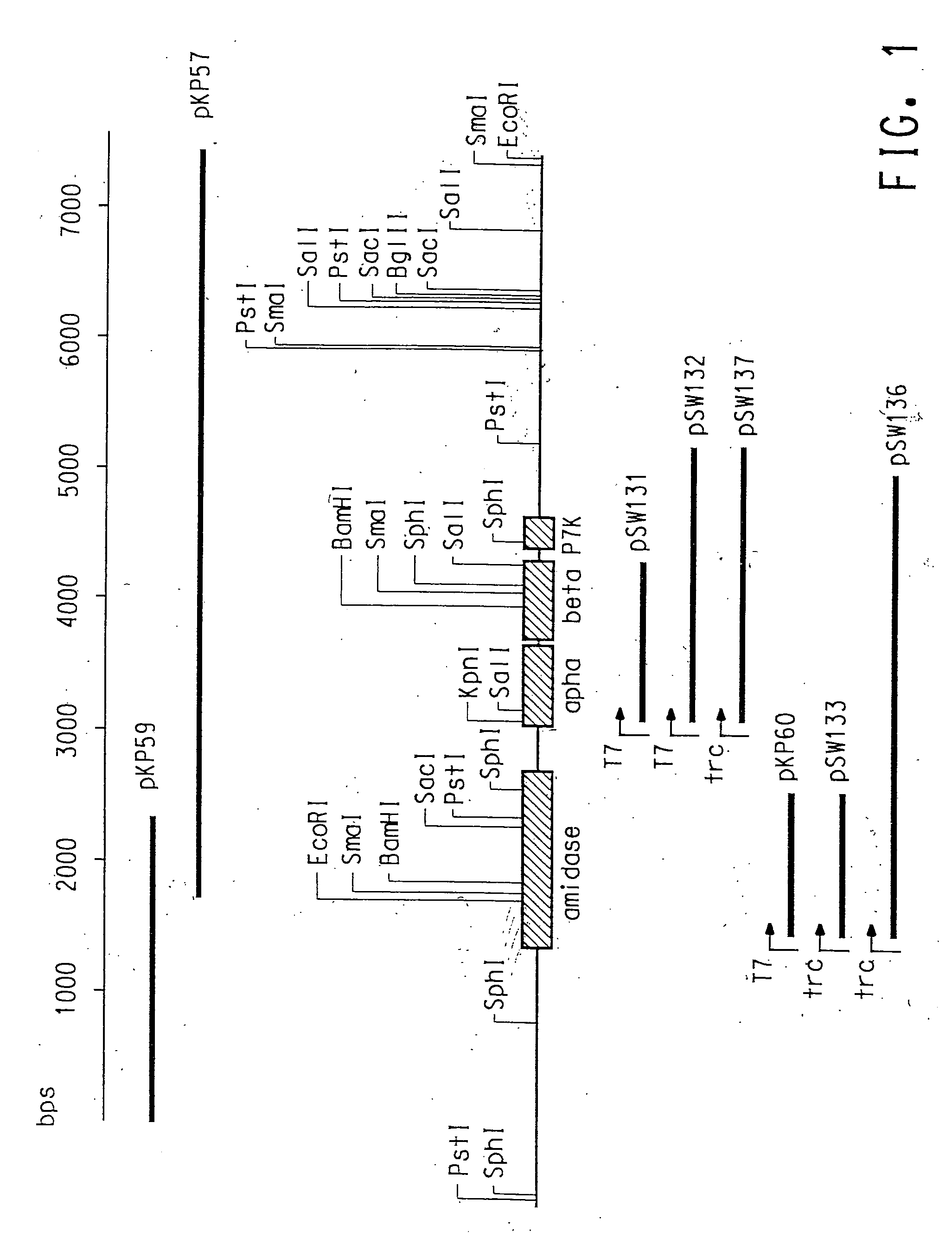Nucleic acid fragments encoding nitrile hydratase and amidase enzymes from comamonas testosteroni 5-MGAM-4D and recombinant organisms expressing those enzymes useful for the production of amides and acids
a technology of which is applied in the field of nucleic acid fragments encoding nitrile hydratase and amidase enzymes from comamonas testosteroni 5mgam-4d and recom, can solve the problems of unsuitable commercial applications of catalysts, many mesophilic nitrile hydratases are remarkably unstable, and many mesophilic nitril
- Summary
- Abstract
- Description
- Claims
- Application Information
AI Technical Summary
Problems solved by technology
Method used
Image
Examples
example 1
Identification of a Genomic DNA Fragment Encoding C. testosteroni 5-MGAM-4D Nitrile Hydratase
[0122]Comamonas testosteroni 5-MGAM-4D (ATCC 55744) was grown in LB media at 37° C. with shaking. Genomic DNA was prepared using a Puregene DNA Isolation Kit according to the manufacturer (Gentra Systems, Minneapolis, Minn.). A Southern analysis (Southern et al., J. Mol. Biol., 98:503 (1975)) was performed on EcoRI restricted genomic DNA using Psuedomonas putida NRRL-18668 genes (SEQ ID NOs:1 and 2) encoding nitrile hydratase alpha and beta subunits (U.S. Pat. No. 5,811,286) as probes. Probe labeling, hybridization, and detection were done using ECL random prime labeling and detection systems version 11 according to the manufacturer (Amersham International, Buckinghamshire, UK). The alpha (SEQ ID NO:1) and beta (SEQ ID NO:2) probes each showed positive hybridization to the same 5.7 kb EcoRI DNA fragment.
example 2
Cloning of a Genomic DNA Fragment Encoding C. testosteroni 5-MGAM-4D nitrile hydratase
[0123] Genomic DNA from C. testosteroni 5-MGAM-4D was prepared (Example 1), restricted with EcoRI, and subjected to standard agarose gel electrophoresis. DNA fragments in the size range of approximately 5-7 kb were isolated and ligated to EcoRI restricted pUC19 (New England Biolabs, Beverly, Mass.). This plasmid library was plated and screened with the P. putida NRRL-18668 nitrile hydratase α-subunit gene probe (SEQ ID NO:1). Probe labeling, hybridization and detection were done using ECL random prime labeling and detection systems version 11 according to the manufacturer (Amersham International). A positively hybridizing colony was isolated and determined to contain an insert of 5.7 kb (pKP57).
example 3
Determination of the nucleotide sequence of the genes encoding C. testosteroni 5-MGAM-4D nitrile hydratase
[0124] The nucleotide sequence of the pKP57 (EXAMPLE 2) insert was determined using an ABI 377-XL DNA sequencer and BigDye Terminator Cycle Sequencing chemistry. A BlastN analysis (Altschul et al., Nucleic Acids Res., 25:3389-3402 (1997)) of the obtained sequence to the GenBank® database confirmed the presence of complete genes encoding nitrile hydratase a and β-subunits and a partial gene encoding amidase. Nucleotide sequences of the pKP57 insert encoding nitrile hydratase α- and β-subunits are given in SEQ ID NO:3 and SEQ ID NO:5, respectively. Deduced amino acid sequences of the pKP57 insert for the α- and β-subunits are given in SEQ ID NO:4 and SEQ ID NO:6, respectively.
[0125] BlastP analysis was conducted using the deduced amino acid sequence for the nitrile hydratase α- and β-subunits. Results are shown in Table 1. The closest match to the instant amino acid sequence of ...
PUM
| Property | Measurement | Unit |
|---|---|---|
| Fraction | aaaaa | aaaaa |
| Force | aaaaa | aaaaa |
| Fraction | aaaaa | aaaaa |
Abstract
Description
Claims
Application Information
 Login to View More
Login to View More - R&D
- Intellectual Property
- Life Sciences
- Materials
- Tech Scout
- Unparalleled Data Quality
- Higher Quality Content
- 60% Fewer Hallucinations
Browse by: Latest US Patents, China's latest patents, Technical Efficacy Thesaurus, Application Domain, Technology Topic, Popular Technical Reports.
© 2025 PatSnap. All rights reserved.Legal|Privacy policy|Modern Slavery Act Transparency Statement|Sitemap|About US| Contact US: help@patsnap.com



